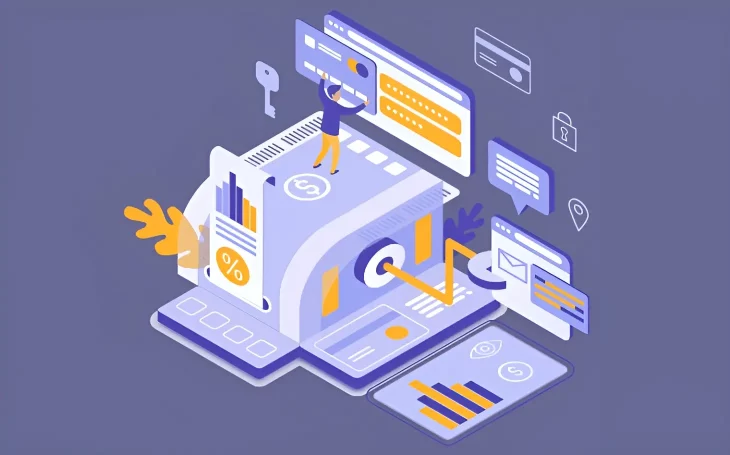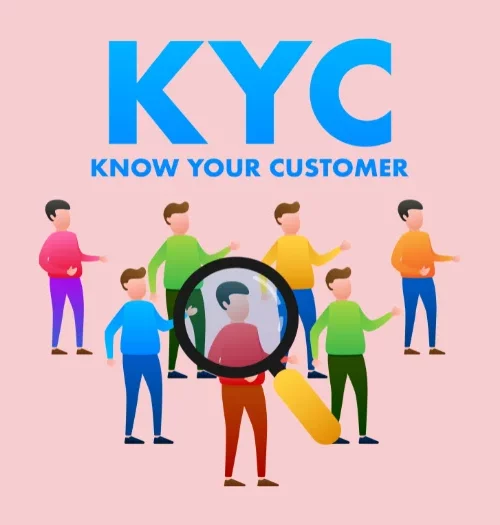Navigating Through The NBFC Compliance Filings & Returns



Introduction
Compliance filings are an essential part of the regulatory framework for Non-Banking Financial Companies (NBFCs) in India. This article provides an overview of the various types of NBFC compliance filings, including Credit Information Companies (CIC) Reporting, NESL Filings, FIU-IND Reporting, CERSAI Filings, CKYCR Filings, Various Returns, and XBRL Filings. Each filing type is explained, highlighting the due dates, procedures, and the significance of these filings in ensuring transparency, regulatory compliance, and the smooth functioning of NBFCs in the financial ecosystem.
Types of NBFC Compliance Filings
Credit Information Companies (CIC) Reporting
- Credit Information Companies (CICs), such as TransUnion CIBIL, Equifax, Experian, and CRIF High Mark, play a crucial role in the financial ecosystem by providing credit information to lenders. These CICs are regulated by the RBI’s Department of Banking Operations and Development. Under the Credit Information Companies (Regulations) Act of 2005 (CICRA), both banks and NBFCs are obligated to report retail loans taken by consumers to all four credit information bureaus. Additionally, they are required to regularly update these credit agencies on the repayment behaviour of consumers. This information is utilized by lenders to assess the creditworthiness of potential borrowers and make informed decisions regarding loan approvals.
- Due Date: The reporting of credit information to CICs must be done on or before the 10th day of the subsequent month.
NESL Filings
- All NBFCs are required to report their financial debt to the National E-Governance Services Limited (NESL). This reporting is necessary to maintain transparency and monitor the financial health of NBFCs.
- Due Date: NBFCs must submit their financial debt report to NESL no later than one week after the start of the following month.
- Procedure: To understand the complete procedure for reporting financial debt to NESL, you can refer to the provided guidelines. It will provide detailed information on the steps to follow and the required format for reporting.
- Report Generation: To generate the report, follow the instructions provided here. It will guide you through the process of compiling the necessary data and formatting it according to NESL’s requirements.
- Report Download: Once the report is generated, you can download it in an Excel file format. The guidelines should provide instructions on how to download the report and save it in the designated format.
- Fee Structure: For information regarding the fee structure associated with the submission of data by NBFCs, please refer to the provided fee structure information. It will outline the applicable fees and payment procedures for reporting financial debt to NESL.
FIU-IND Reporting
- All regulated organizations are obligated to report specific transactions to the Financial Intelligence Unit – India (FIU-IND) agency, as specified in Rule 3 of the 2005 Prevention of Money Laundering Act (PMLA) Regulations.
- Due Date: The reporting of transactions must be completed within 15 days of the subsequent month. If an organization becomes convinced that a transaction is suspicious, it must be reported to the FIU-IND within 7 working days.
- Section 215 of the Insolvency and Bankruptcy Code (IBC), 2016 outlines the methods for accommodating financial information by NBFCs. It is mandatory for creditors to submit financial data and information related to assets against which any security interest has been created.
- Submission of Financial Data to Information Utility: It is at the discretion of operational creditors to submit financial data to the information utility in the specified format.
- Fee and Data Submission: People who intend to submit financial data to the information utility or retrieve information from it must pay a specified fee and adhere to the regulations regarding the prescribed format and submission method.
- For more information, refer to their website.
CERSAI Filings
- When disbursing secured loans, it is important to initiate CERSAI filings to register the first change of the secured property as soon as possible. This registration is crucial for creating a legally recognized security interest over the collateral provided by the borrower.
- Due Date: The specific due date for completing the CERSAI filing may vary depending on the applicable regulations and internal policies of the lending institution. However, it is advisable to complete the filing process promptly after the disbursement of the loan to ensure timely registration and protection of the lender’s security interest.
- CERSAI (Central Registry of Securitisation Asset Reconstruction and Security Interest of India) is a government-owned company in India, operating under a license granted by section 8 of the Companies Act 2013.
- In the beginning, the company was established with a majority of shares held by the Central Government of India, Public Banks, and NHB (National Housing Bank). Its primary purpose was to operate a Registration System under the provisions of the SARFAESI Act.
- Subsequently, CERSAI was entrusted with the responsibility of maintaining a KYC Registry under the PML Rules 2005 (Maintenance of Records).
- The Security Interest Registry, established in 2011, started by registering security interests in immovable properties and has expanded to cover movable, intangible properties and assignment of receivables.
- The registry provides access to all types of creditors and enables the filing of attachment orders and court orders, offering a comprehensive overview of encumbered or attached properties.
- The Security Interest Registry has made a significant contribution to the Ease of Doing Business (EoDB) score of the country, specifically under the “Getting Credit” category.
- After obtaining a CKYC number, entities are required to register on the website.
CKYCR Filings
- When disbursing loans or establishing an account relationship, it is mandatory for all regulated entities (REs), including NBFCs, to conduct Know Your Customer (KYC) verification. This process ensures that proper due diligence is carried out to verify the identity and address of the customer, mitigating the risk of financial fraud or illegal activities.
- Due Date: The completion of CKYCR filings must be done within ten days from the start date of the account relationship or loan disbursal. It is crucial for NBFCs and other REs to promptly gather the necessary KYC documents and information from customers, verify their authenticity, and register the details with the Central KYC Registry within the prescribed timeline.
- CKYC Filing is a crucial compliance requirement for NBFCs in India and is being widely adopted by companies.
- Central KYC, also known as CKYC, serves as a centralized repository for collecting customer records in the financial services sector.
- CERSAI serves as the official registry for Central KYC (Know Your Customer).
- All entities regulated and registered by the Reserve Bank of India, such as NBFCs, must obtain Central KYC registration.
- The purpose of Central KYC is to streamline the process for NBFCs by centralizing customer documentation and facilitating the establishment of new relationships with financial entities.
Get the prescribed CKYC Registration Form here.
Various Returns
- DNBS 02: This return is filed quarterly by NBFCs that accept and hold deposits. It includes critical financial parameters and indicators. The NBFCs are required to file this return within 15 days of the end of each quarter. It provides important financial information to regulatory authorities.
- DNBS 10: The statutory auditor certificate (SAC) is an annual return filed by NBFCs. It should be filed within one month of finalizing the balance sheet. However, this return cannot be filed after December 31st of the relevant financial year. The return confirms the accuracy and completeness of the financial statements.
- DNBS 13: This return pertains to overseas investment details. NBFCs with overseas investments are required to file the DNBS 13 return every quarter. The filing deadline is 15 days after the end of each quarter. The return provides information on the NBFC’s investments made outside the country.
XBRL Filings
As of around 2020, the Reserve Bank of India (RBI) introduced a requirement for all NBFCs to submit their returns in XBRL (Extensible Business Reporting Language) format. This applies to both financial and non-financial institutions.
Non-financial institutions, including NBFCs, are obligated to submit various returns to the RBI related to deposits, prudential norms, compliance, and other regulatory requirements. The RBI mandated that all NBFCs must file these returns using the XBRL mode, starting from the financial year 2019-20. There are no exceptions to this requirement, and all NBFCs are expected to comply.
The specific types of returns that NBFCs are required to file in XBRL format include DNBS 02, DNBS 10, and DNBS 13. These returns cover critical financial parameters and indicators, statutory auditor certificates, and overseas investment details, respectively.
You may also like: Top 10 KPIs to Measure the Efficiency of Loan Origination Process
Conclusion
Adherence to NBFC compliance filings is crucial for the smooth functioning of Non-Banking Financial Companies and for maintaining transparency in the financial ecosystem. By fulfilling their reporting obligations, NBFCs contribute to the assessment of creditworthiness, monitor financial health, combat money laundering, and facilitate ease of doing business. Staying updated and compliant with these filings ensures a strong regulatory foundation and fosters trust among stakeholders in the NBFC sector.
Related Post

Alternative Credit Scoring – Why Is It So Popular?
Priyank Raj from Mumbai was in a fix. He had

CKYC: The Game-Changer for Modern Finance
Introduction The importance of CKYC (Central Know Your Customer) in

An Introduction To Credit Bureaus
What is a Credit Bureau? A company which collects information
- Email: [email protected]
- Sales Enquiries: +91 9080996606
- HR Enquiries: +91 9080996576
Quick Links
Resources
© 2024 LightFi India Private Limited. All rights reserved.
(Formerly known as Habile Technologies)